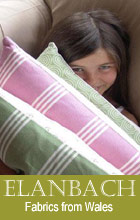The Traeth Mawr (Welsh: big sands) is a polder near Porthmadog in Gwynedd in Wales. It was formerly the tidal estuary of the River Glaslyn, and many travellers sank in its quicksands trying to cross it. Much of it is between high mountains. Pont Aberglaslyn is at its upper end.
Between 1770 and 1800 about 1,500 acres (6 km�) of it were reclaimed piecemeal by various landowners, in portions between 50 and 100 acres (0.2 and 0.4 km�) in size.
Some time after 1789, William Madocks reclaimed an area of sand and built Tremadog on it. Madocks obtained an Act of Parliament (1 August 1807 - 47 George III Cap. 71) permitting him to complete the reclamation. Between 1808 and 1811 he constructed an embankment called "the Cob" from the island of Ynys Towyn (now part of Porthmadog) near the Caernarfonshire shore to Boston Lodge on the Merioneth shore in order to cut off the estuary from the sea; this gained 1500 acres (6 km�). Soon after, in 1812 the embankment broke in a violent storm, but the breach was mended by the end of September 1814.
The Ffestiniog Railway has crossed the embankment since 1836 when a carriageway was constructed at a lower level on the inland side to take the public road, which is now the A487. The embankment is officially regarded as a bridge and a toll was payable by road vehicles until September 2003, when the Cob was bought by the Welsh Assembly Government. That tollgate was notorious for causing traffic jams at peak holiday travel times: it was not exceptional for the queue to back up all the way to Minffordd, one mile away. The road on the Cob was widened in 2002, and a separate path added for walkers and cyclists. This path now forms part of L�n Las Cymru, the national cycle route.
In July 2005, work began on extending the Welsh Highland Railway to a loop named Traeth Mawr.
At its seaward end, the Traeth Mawr joins the "Traeth Bach" ("little sands") - the estuary of the River Dwyryd | 


